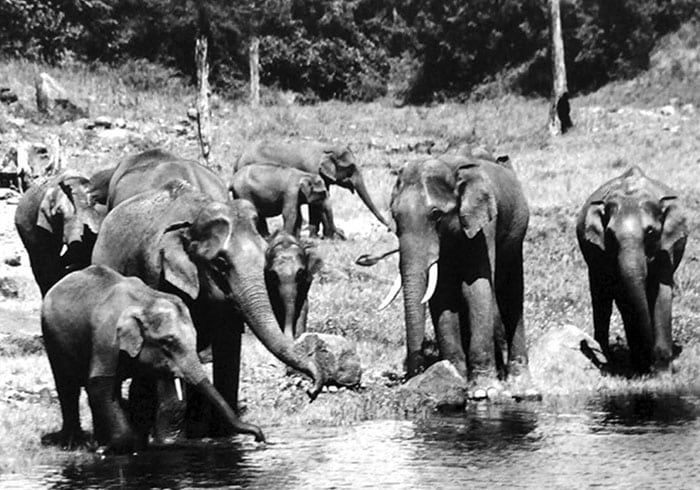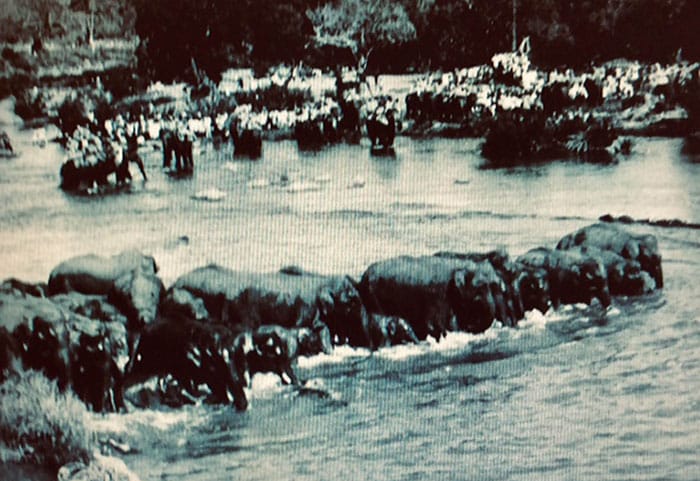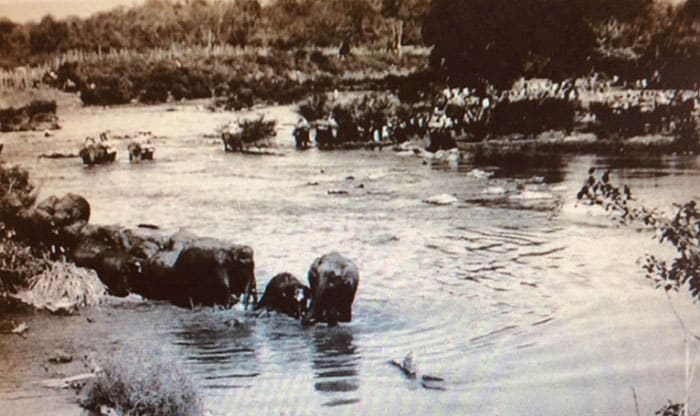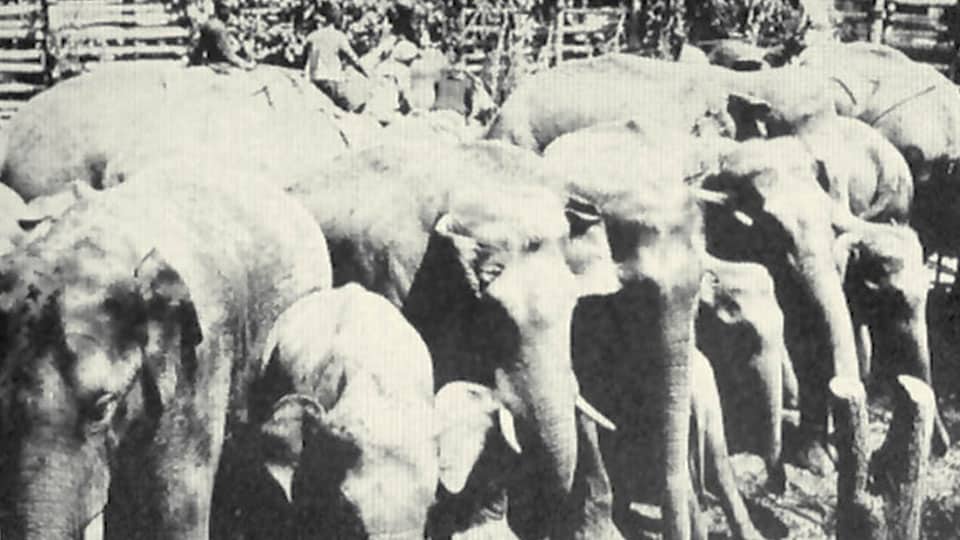By Girija Madhavan
Memories are like faded flower petals in a ‘Pot-pourri’ jar; once vibrant blooms, their colour now dimmed, their life over. Yet, when the jar is opened, a faint fragrance still wafts out. Old memories too come to fleeting life again when revived. Apart from my personal recollections of early childhood, I also retain part of a collective family memory stemming from ‘story-telling time’, when elders retold favourite tales. The Khedda story is one such.
Human interaction with elephants goes back to the misty past. They were captured and tamed, the methods used are said to have been chronicled by Megasthenes in circa 200 BCE; popular ways being of trapping them in concealed pits or herding them into a stockade, the Khedda method. They were prized possessions of royalty and temples too. Single elephants also were captured and tamed as depicted in paintings.
The royal family of Mysore has traditionally maintained a stable of elephants; the ‘Pattada Aane’ [flag elephant], ‘Ambari Aane’ [the one carrying the howdah] and ‘Nishane Aane’. As a small girl, I have seen Maharaja Jayachamaraja Wadiyar in the howdah of the caparisoned, decorated Ambari Aane in the Dasara procession. In traditional regalia, he raised his folded hands, flashing with rings, to acknowledge the salutations of the crowds. Elephants are still stars of the Dasara procession, loved by spectators.

Forests in Karnataka long ago were full of wildlife, including herds of elephants. The Khedda was introduced by a British Officer called G.P. Sanderson at Kardihalli in Kakanakote forest along the Kabini river bank, in 1873-74. Kheddas were later held as spectacles for important visitors to Karnataka.
Though he had not attended a Khedda himself, my father, M. Venkatesh had heard accounts of it from Ursu colleagues. It was a massive operation, sometimes composed of a thousand men; ‘beaters’ banging drums, flares and trained elephants [Kumkis] herding the wild ones. A herd, selected in the forest, was driven into a secure stockade from which there was no escape. They were held there in captivity for a while, then tamed elephants or Kumkis would enter the stockade while the mahouts and helpers would rope and isolate the animals meant to be tamed.
Father was a little wistful that he had not witnessed an event of this magnitude. But Mukta, my mother, was aghast at the thought of the dust, the trumpeting of the terrified animals, the separation of calves from their mothers, and finally the cruel training to break their mighty spirit. In 1972, Kheddas were legally banned under the Wildlife Protection Act.

Royal families and the British rulers organised hunts or ‘Shikar’. Tigers, panthers, bisons, bears and other species fell to the hunters guns. A need arose to preserve these trophies. The Van Ingen family of Mysore were expert taxidermists. Dutch traders, they were said to have migrated to the Deccan in the 17th century. Eugene Melville van Ingen started a taxidermy business in Mysore which was called Van Ingen & Van Ingens or Van Ingen of Mysore [1900-1999]. Their artistic creations were internationally sought-after by collectors and museums. The ban on the hunting of endangered species and the Wildlife Protection Act affected the taxidermy business.
Film Directors, Robert J. Flaherty and Zoltan Korda, made the film ‘Elephant Boy’ in Mysore [1937] launching young ‘Sabu’ into Hollywood stardom. Botha van Ingen, one of the three van Ingen brothers, helped Robert Flaherty with advice on forest and animal lore for this film.

Flaherty’s documentary on Eskimos [now called the Inuit people] titled ‘Nanook of the North’ in 1922 and ‘Moana’ in 1926 about Samoa in the South Pacific were classics. His children who accompanied their parents assimilated these diverse cultures. One of his daughters, Barbara, joined her parents in India in 1934 and met Botha van Ingen. They married, had a family of three children and built a house called ‘The Land’ in Mysore.
My mother Mukta, because of the common bond of painting, art and literature, was a friend of Barbara van Ingen, who often visited Mukta in her Yadavagiri home. Barbara herself was a gifted artist whose sketch of her father playing the violin was very vivid. In 1976, at the age of sixty, she returned to the US to live in Brattleboro. She corresponded with Mukta who fondly saved her letters and cards. Mukta passed away in 2003 at the age of over 101 years; Barbara at the age of 89, in Brattleboro in the US a couple of years later.

I have returned to live in Mysuru in my old age; to a city and ethos somewhat changed from my birthplace of 85 years ago. Yet it is comfortingly familiar, the old city melding into new times, but with a sense of continuity… like a loved personality changing over the years but always with beauty and grace.








Recent Comments